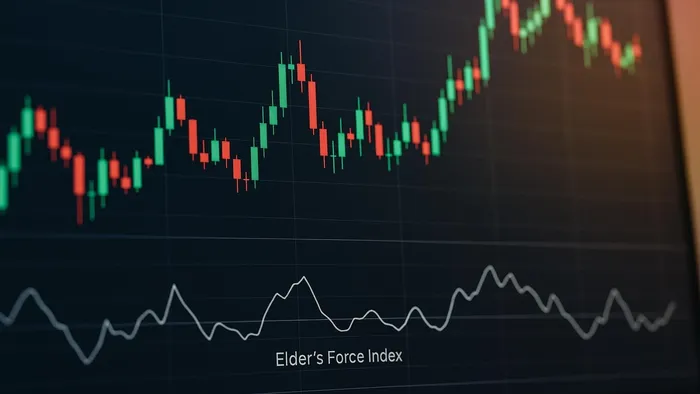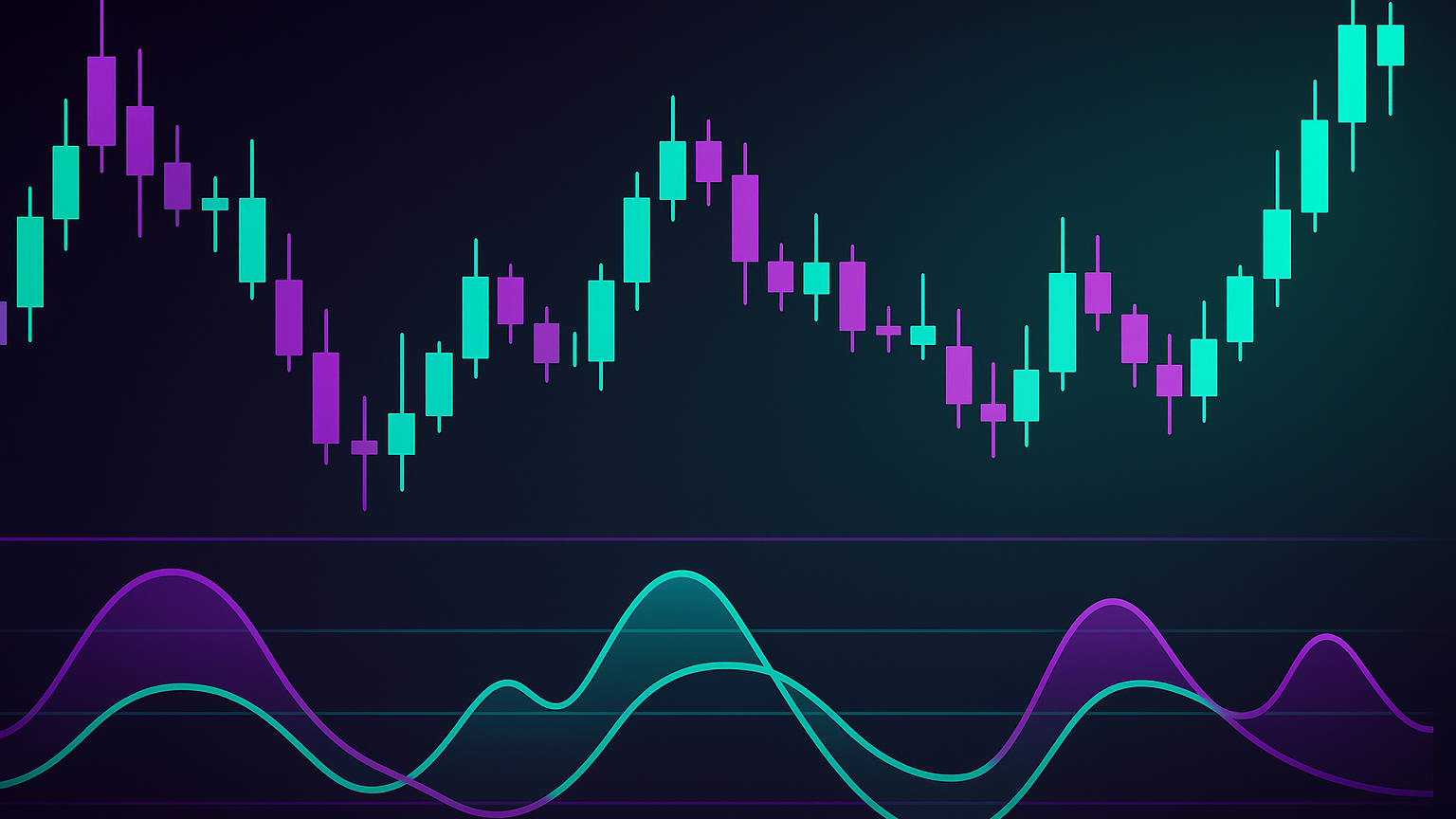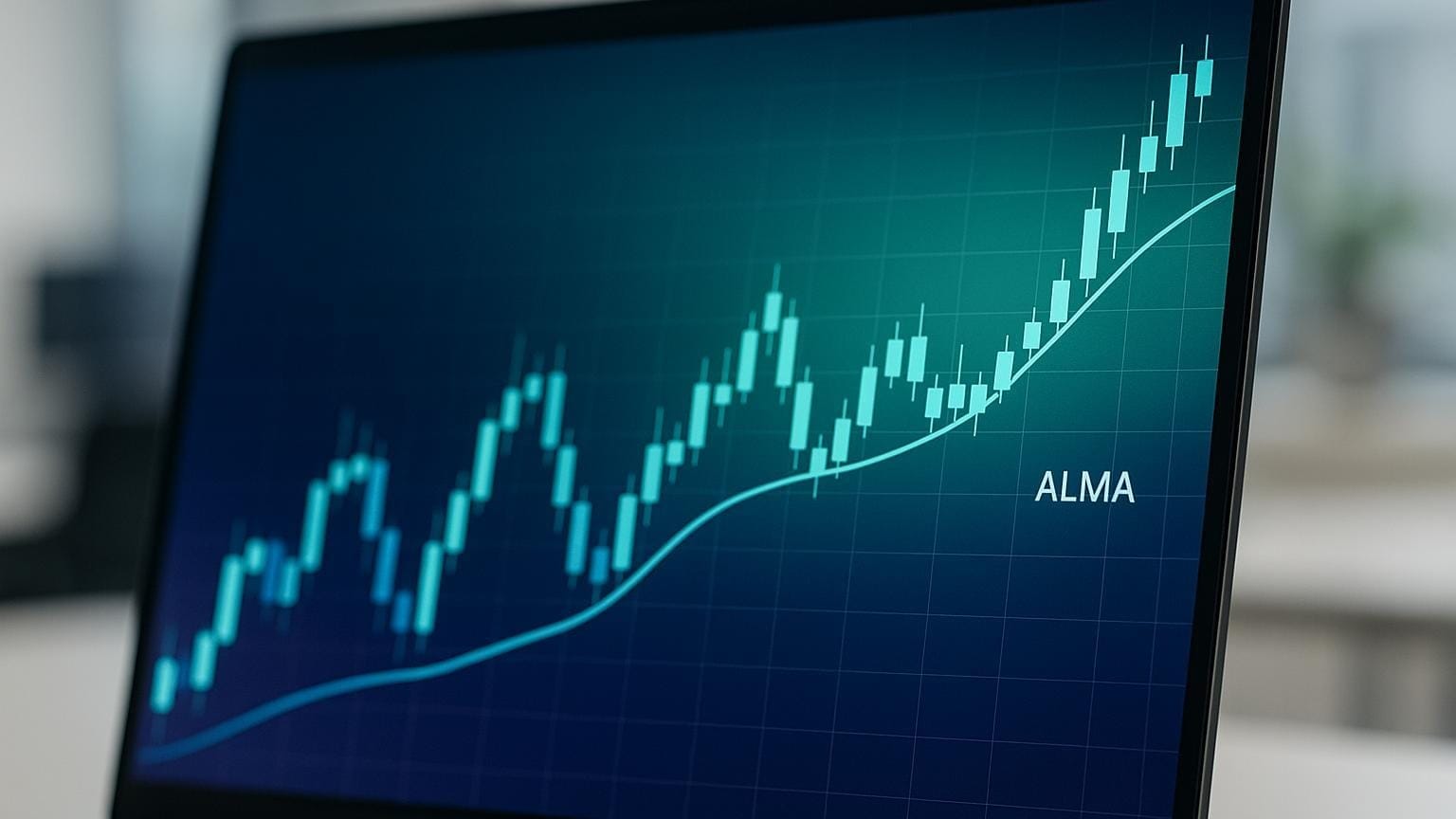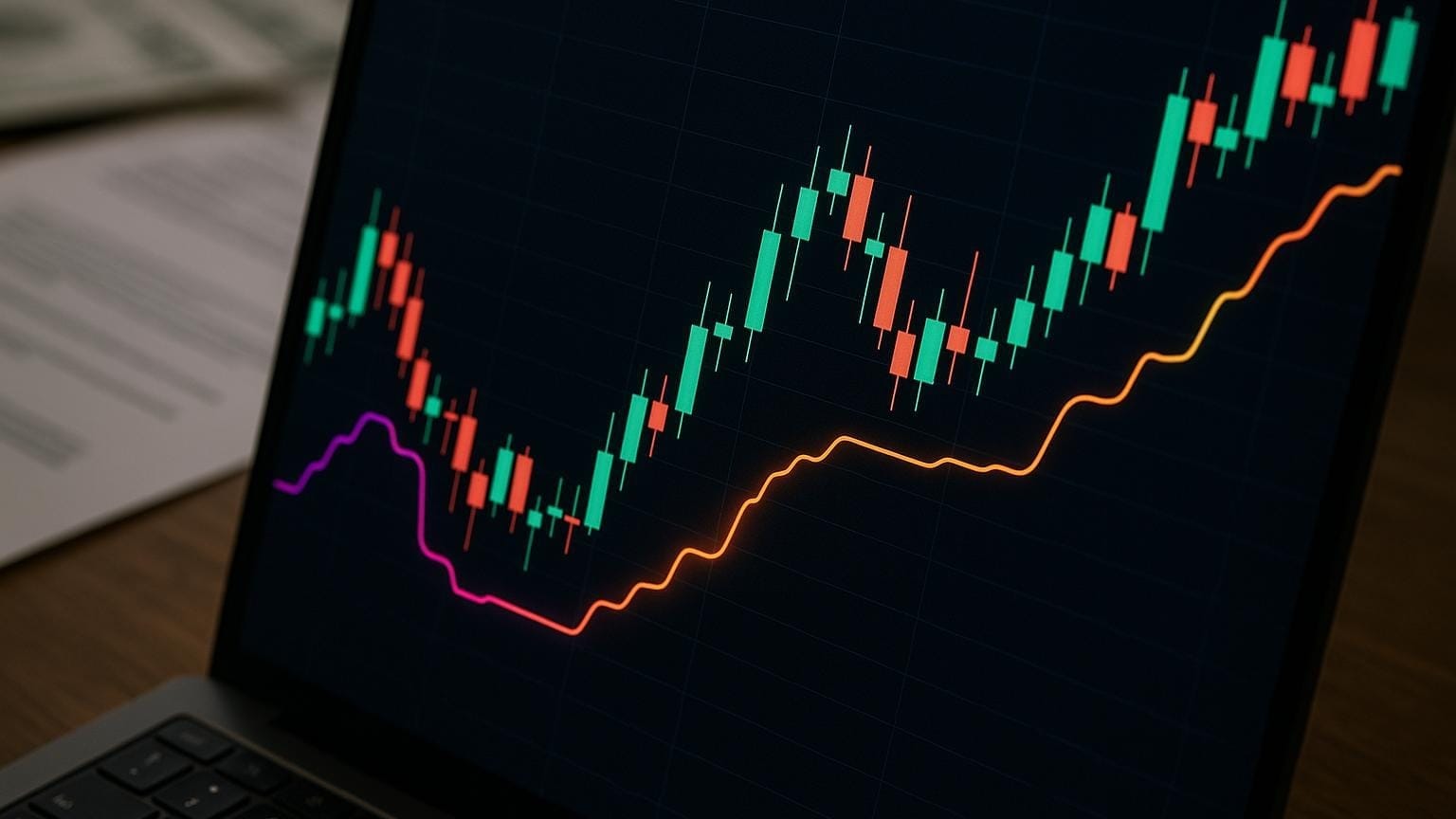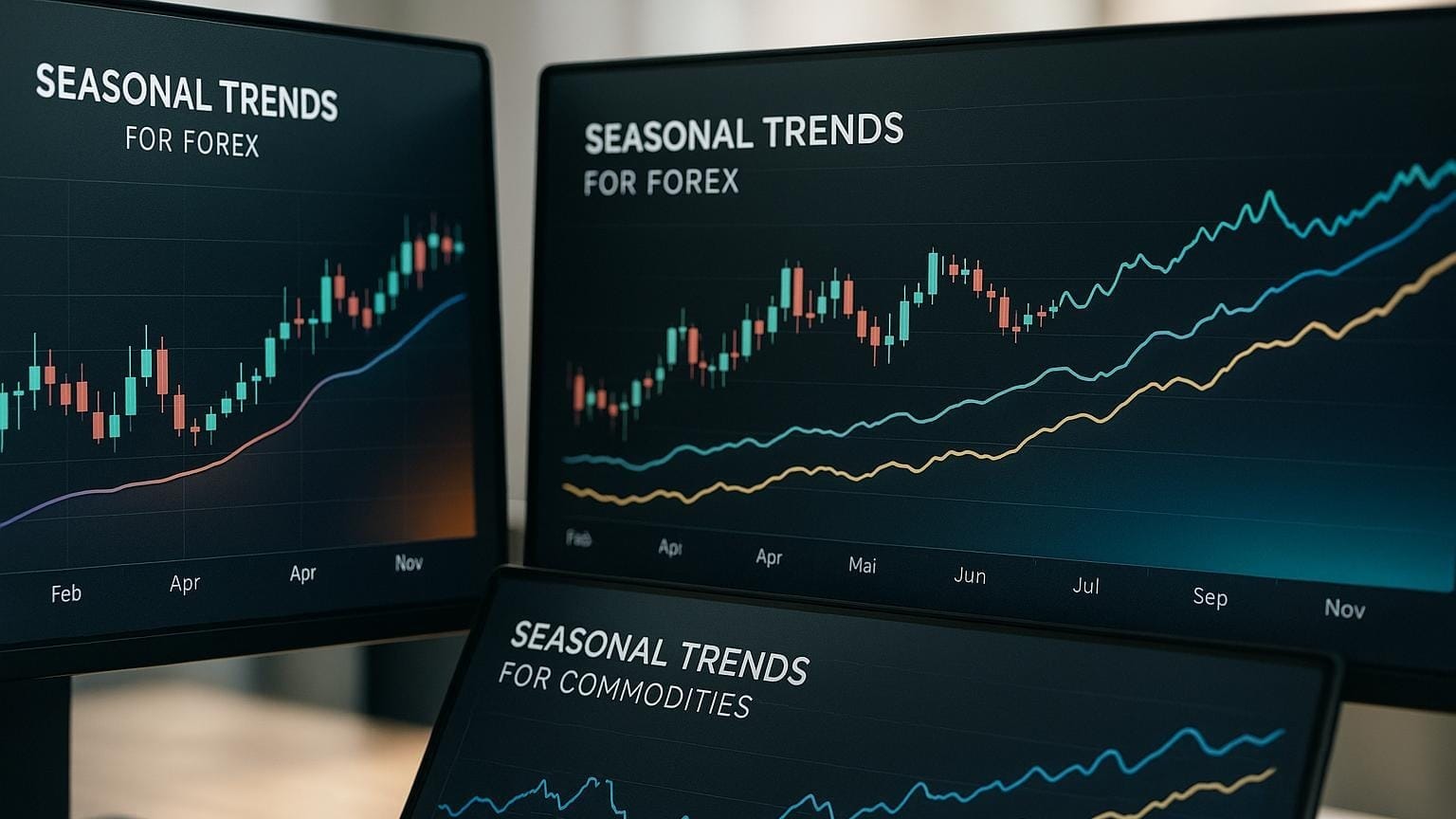Understand the Elder's Force Index, a powerful momentum tool that combines price and volume to gauge market strength and inform trading strategies.
The Elder’s Force Index (EFI) is a momentum oscillator that combines price changes with trading volume to measure market strength. Created by Alexander Elder, it helps traders evaluate buying and selling pressure, confirm trends, spot reversals, and assess breakout strength. EFI values fluctuate around a zero line: positive values indicate bullish momentum, while negative values signal bearish pressure.
Key Takeaways
- Formula:
(Current Close - Prior Close) × Volume - Zero Line: Values above zero show buying pressure; below zero indicates selling pressure.
- Trend Confirmation: Rising EFI during price increases confirms strong trends.
- Divergences: EFI divergences with price suggest potential reversals.
- Breakouts: Spikes in EFI validate strong breakouts.
Practical Use
- Settings: The default 13-period EMA smooths volatility. Shorter periods suit day traders; longer periods work for swing traders. For background on the exponential moving average (EMA), see this overview.
- Platforms: Available on TradingView, MetaTrader, NinjaTrader, and others.
- Tips: Pair EFI with complementary tools like support/resistance indicators for better accuracy.
EFI is most effective in trending markets but may generate false signals in low-volume or choppy conditions. For best results, combine it with other indicators and backtest strategies before trading live.
Mastering the Elder Force Index: A Powerful Tool for Trend Analysis and Trading Strategies
How Elder's Force Index Works
Elder's Force Index (EFI) measures market conviction by blending price movement with trading volume. Its straightforward formula offers insights into market dynamics, making it a reliable choice for gauging buying and selling pressure. Let’s break it down.
The EFI Formula Explained
The formula for EFI is simple yet revealing: EFI = (Current Close - Prior Close) × Volume. While it may look basic, each part of this equation plays a key role in understanding the market's behavior.
-
Price Change (Current Close - Prior Close):
This shows the direction and intensity of price movements:- If today’s closing price is higher than yesterday’s, the result is positive, signaling buying pressure.
- If today’s closing price is lower, the result is negative, indicating selling pressure.
- The size of the price change reflects how strong the move is — a larger difference points to greater momentum.
-
Volume:
Volume acts as a multiplier, amplifying the significance of price changes. For instance, the same price movement will generate a higher EFI value when paired with high trading volume compared to low volume. This ensures market activity is factored into the analysis.
TC2000 explains it clearly:
“The force index is calculated by subtracting yesterday's close from today's close and multiplying the result by today's volume. If closing prices are higher today than yesterday, the force is positive. If closing prices are lower than yesterday's, the force is negative. The strength of the force is determined either by a larger change in price or a larger volume; either situation can independently influence the value and the change in force index.” [1]
Because the raw one-period EFI can be quite volatile, traders often use a 13-period exponential moving average (EMA) to smooth out the data. This helps identify trends more clearly. Up next, we’ll look at how the zero line plays a critical role in reading these values.
Reading the Zero Line
The zero line is a critical reference point in EFI analysis. It helps traders determine whether buying or selling pressure dominates the market.
- Above Zero: Indicates buying pressure.
- Below Zero: Signals selling pressure.
Crossovers of the zero line are especially noteworthy:
- An upward crossover (moving from below to above zero) often suggests a potential buying opportunity.
- A downward crossover (moving from above to below zero) can signal a selling opportunity.
These crossovers also confirm the strength of price breakouts, as they ensure that significant volume supports the move.
Moving Average Period Settings
To make the EFI practical for different trading strategies, the moving average period can be adjusted. While the standard 13-period EMA is widely used, tweaking this setting allows traders to fine-tune the balance between responsiveness and stability.
- Shorter Periods: Increase sensitivity to price changes, but can introduce noise and false signals.
- Longer Periods: Provide smoother trend lines, filtering out short-term fluctuations — better for swing or position trading.
Finding the right balance between responsiveness and reliability is key. Tailoring the settings to match your trading style ensures the EFI works effectively for your specific approach.
Using Elder's Force Index in Trading
The Elder Force Index (EFI) combines price and volume to offer valuable insights into market movements. By applying this tool in real trading scenarios, traders can confirm trends, spot potential reversals, and evaluate breakout strength. These applications help refine trading decisions and strategies.
Confirming Trends with EFI
EFI is a reliable way to assess whether a trend has real momentum. When prices consistently move in one direction, the EFI should mirror this behavior, indicating the trend's strength and sustainability.
- In an uptrend, EFI values staying above zero signal that buying pressure dominates. Stronger uptrends often produce more pronounced positive EFI readings, confirming that price advances are supported by volume.
- In a downtrend, EFI values remaining below zero indicate persistent selling pressure. Deeply negative readings during price declines suggest the downtrend has solid backing and is likely to persist.
Sustained EFI readings that align with the price trend provide confirmation. If prices are climbing but the EFI weakens or dips below zero, it can signal that the uptrend is losing momentum despite higher prices. This insight becomes particularly useful when you're uncertain about a trend's strength.
Spotting Reversals and Divergences
EFI is helpful for identifying potential reversals using divergences and zero-line crossovers. These signals often appear before price reversals.
- A bearish divergence occurs when prices make new highs, but EFI shows declining peaks, hinting at weakening buying pressure.
- A bullish divergence happens when prices hit new lows, but EFI forms higher lows (less negative values), suggesting selling pressure is fading.
Zero-line crossovers also signal shifts in market control. When EFI moves from negative to positive, buyers are overtaking sellers. Conversely, a shift from positive to negative shows sellers gaining the upper hand. For a primer on divergence in technical analysis, see this overview.
The most reliable reversal signals come from a combination of both — a divergence followed by a zero-line crossover in the expected direction. These can guide timely entries or exits.
Measuring Breakout Strength
EFI is also a key tool for assessing the strength of breakouts. Whether prices are breaking out of consolidation patterns, trading ranges, or key support and resistance levels, EFI can help determine if the move has genuine momentum or if it’s likely to fail. For foundational context on breakouts in trading, review this reference.
“A valid breakout should be accompanied by a spike in the Elder Force Index.” [5]
- For upside breakouts, look for a surge in EFI above zero.
- For downside breakouts, a sharp drop in EFI below zero confirms strong selling pressure.
“When a price breaks out from a tight consolidation, traders should check if the move is accompanied by a spike or breakout in the Elder Force Index.” [5]
A significant spike in EFI during a breakout signals strong conviction behind the move, while a modest increase might suggest a weak breakout that could reverse. By capturing both price changes and volume, EFI helps differentiate between breakouts with genuine strength and those that lack follow-through.
Up next, we’ll explore how to set up and integrate EFI into your trading platform for practical use.
Setting Up Elder's Force Index
Getting Elder's Force Index (EFI) up and running on your trading platform is simple, but fine-tuning it to match your trading style makes all the difference. Adjusting the settings properly can turn this indicator into a key part of your trading strategy.
Adjusting EFI for Different Markets
The moving average period is the primary setting to modify when adapting EFI to various markets. Each asset class behaves differently, so tweaking this parameter ensures better performance.
For stock trading, the default 13-period moving average usually works well. However, if you're trading volatile growth stocks or penny stocks, extending the period to 20 or even 25 can help filter out false signals. Cryptocurrencies, on the other hand, are known for their faster and more volatile movements. Shorter moving averages of 8 to 10 periods are more effective here, though Bitcoin and Ethereum often perform just fine with the standard 13-period setting.
In forex trading, a 10 to 15-period moving average is often ideal for major currency pairs like EUR/USD. For exotic pairs, which tend to be more volatile, longer periods of 18 to 21 are better suited. Commodities typically benefit from a 15 to 20-period moving average, which balances capturing momentum while avoiding unnecessary noise from short-term price swings.
To find the best fit for your trading style, backtest different periods. Day traders often prefer shorter periods for quicker signals, while swing traders lean toward longer periods to focus on more substantial price movements.
Adding EFI to Trading Platforms
EFI is widely available on trading platforms, including TradingView, where it was introduced by Alexander Elder [6]. Adding it to your chart is straightforward.
On TradingView, click “Indicators,” search for “Elder's Force Index” or “EFI,” and add it. The EFI appears in a separate pane below your price chart, oscillating around the zero line. You can customize its appearance by adjusting the line style. A common setup is using green for positive values and red for negative ones, making it easy to spot shifts in market sentiment.
The default setting is a 13-period moving average, which you can adjust in the settings panel under “Length,” “Period,” or “MA Period.” For those using MetaTrader 4/5, EFI can be found under “Oscillators.” NinjaTrader includes it in its standard indicator library, and ThinkorSwim lists it under “Studies.”
Once you've added EFI to your platform and customized it, consider integrating it with LuxAlgo capabilities for deeper analysis.
Using EFI with LuxAlgo Tools
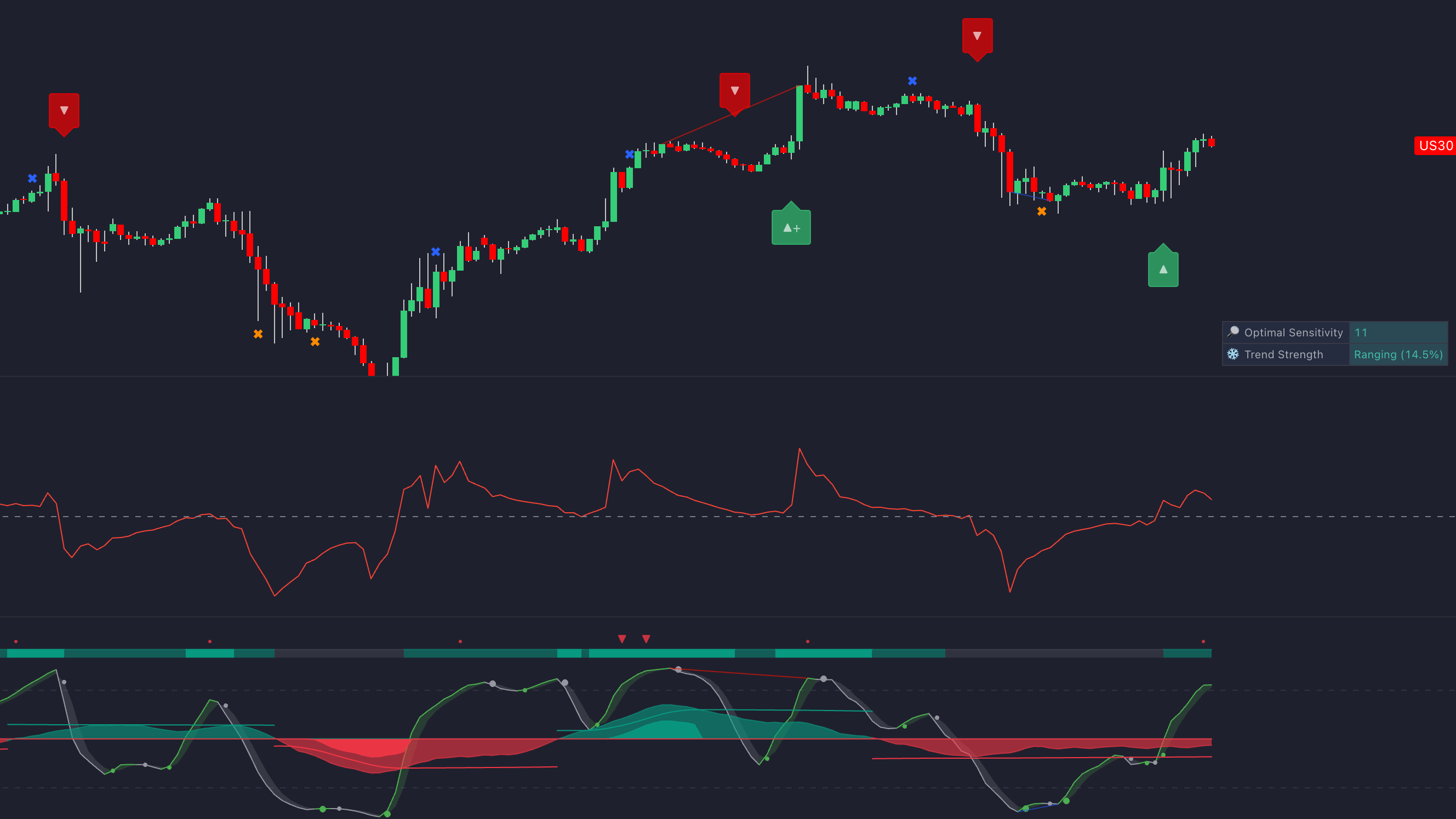
LuxAlgo provides advanced indicators and analytics on TradingView that complement EFI and enhance its effectiveness.
The Signals & Overlays toolkit works well with EFI to confirm trends. For example, when EFI shows strong positive values during an uptrend, Signals & Overlays can highlight support levels and momentum shifts, helping you pinpoint entry points.
The Oscillator Matrix is another powerful resource, combining EFI with other momentum indicators in real time. It identifies when EFI aligns with other oscillators, increasing the likelihood of successful trades. Additionally, its real-time divergence detection highlights moments when EFI diverges from price action, signaling potential reversals.
Important: LuxAlgo’s AI Backtesting Assistant does not directly backtest the Elder’s Force Index or third-party indicators. You can still use AI Backtesting to evaluate rule-based strategies available on the platform, then apply EFI as a discretionary overlay for confirmation. For platform details, see the Backtesting Assistant docs.
Premium provides advanced signals, alerts, and oscillator tools on TradingView. Ultimate includes access to the AI Backtesting platform (strategy creation and testing), but it won’t run EFI-specific optimizations.
Pros and Cons of Elder's Force Index
Benefits of EFI
One standout feature of EFI is its dual-factor approach. Unlike indicators that rely solely on price, EFI combines price movement with volume data. This combination provides a more complete view of market activity. For example, strong EFI readings confirm that both price and volume are aligned, reinforcing the move.
Another major benefit is its ability to confirm trends. EFI helps determine whether a price trend has genuine momentum. For instance, if a stock’s price is climbing and EFI remains consistently positive, it indicates real buying interest rather than short-lived price spikes.
EFI is also excellent for spotting divergences. If the price hits new highs but EFI doesn’t follow suit, it’s a red flag for weakening momentum. This early warning can help you exit positions before a reversal or prepare for a potential trend shift.
When it comes to breakouts, EFI can be a valuable tool. Many breakouts fail due to insufficient volume, but strong EFI readings during a breakout confirm that there’s volume support. Conversely, weak EFI readings can signal a false breakout.
Another advantage is its versatility. EFI works well across different timeframes and markets, whether you’re day trading forex, swing trading stocks, or analyzing cryptocurrencies.
Drawbacks of EFI
Despite its advantages, EFI has limitations to consider.
One challenge is its sensitivity to market noise on shorter timeframes. In choppy markets, EFI can generate frequent signals that don’t lead to meaningful price movements. This can be frustrating for day traders using 1-minute or 5-minute charts.
Another issue is lagging behavior. Since EFI often incorporates moving averages, it tends to lag behind price action. By the time EFI confirms a trend change, the best entry or exit point might have passed.
EFI can also produce distorted readings in low-volume assets. In thinly traded stocks or smaller cryptocurrencies, a single large trade can skew the indicator.
False signals are another drawback, particularly in sideways markets. When prices are range-bound, EFI often oscillates around the zero line without providing clear direction.
Lastly, EFI struggles with gap openings. When a stock gaps up or down at the open, EFI might show extreme readings that quickly normalize.
Tips for Better EFI Results
- Pair EFI with other indicators to filter out false signals. For example, LuxAlgo’s Signals & Overlays can add confirmation by highlighting key support and resistance levels. If EFI shows bullish momentum and the toolkit confirms a bounce from support, it increases the chances of a successful trade.
- Adjust the moving average period based on your trading style and market conditions. In volatile markets, using a longer period like 20 or 25 can help filter out noise. For more responsive signals in calmer markets, shorter periods like 8 or 10 work better. Experiment with different settings using AI Backtesting to evaluate compatible rule-based strategies; then layer EFI as a manual filter.
- Use multiple timeframes for a clearer perspective. Focus on zero-line crossovers rather than minor fluctuations. Checking EFI on both your trading timeframe and a higher timeframe can help you identify more reliable signals.
- Always test strategies before trading live. While AI Backtesting won’t optimize EFI parameters directly, it can validate broader strategy logic under different market regimes.
- Pay attention to volume patterns. EFI performs best when volume activity aligns with its readings. Be cautious if you see strong EFI signals during low-volume periods such as lunchtime or holidays.
- Consider using the Oscillator Matrix to strengthen EFI’s reliability. When EFI aligns with other momentum indicators in the matrix, the chances of false signals decrease significantly.
Getting Started with Elder's Force Index
Once you’ve grasped the basics of Elder's Force Index (EFI), the next step is figuring out how to use it effectively in your trading strategy. EFI combines price movement and volume to provide insights into market momentum.
“Dr. Alexander Elder is one of the contributors to a newer generation of technical indicators. His force index is an oscillator that measures the force, or power, of bulls behind particular market rallies and of bears behind every decline.” [3]
Most platforms make it easy to add EFI to your charts — whether as an overlay, below the price plot, or behind it [4]. However, the raw version of EFI can be choppy. Applying an EMA smooths the indicator and filters out noise. Here’s a simple approach: when EFI moves above zero, it signals upward momentum; when it dips below zero, it points to a downward trend. Buy signals can occur when EFI crosses above zero or its moving average, while sell signals emerge when it falls below these levels [2].
To enhance EFI’s effectiveness, pairing it with LuxAlgo capabilities can be a game-changer. Signals & Overlays helps identify critical support and resistance, while the Oscillator Matrix uncovers divergences across multiple momentum indicators. You can also use AI Backtesting to validate rule-based strategies in general, then apply EFI as a discretionary filter (the AI won’t backtest EFI itself).
A straightforward tactic is to go long when EFI crosses above zero (or its moving average) and short when it falls below, exiting when the opposite signal appears [2]. The timeframe you choose for the EMA plays a big role in how the indicator performs. A 2-day EMA can highlight short-term corrections, while a 13-day or even 100-day EMA suits medium or longer trends [3][4]. Starting with a paper trading account is a smart way to practice interpreting EFI signals, especially in markets with steady volume patterns.
LuxAlgo’s ecosystem is well-suited for mastering EFI. Premium offers advanced tools and screeners on TradingView, while Ultimate includes access to the AI Backtesting platform for strategy creation and testing (not EFI-specific optimization).
FAQs
How can I use the Elder's Force Index with other indicators to enhance my trading strategy?
To sharpen your trading strategy, consider pairing the Elder's Force Index (EFI) with other indicators that complement its insights. For instance, combining EFI with moving averages — like the 50-day or 22-day EMA — can help confirm both direction and strength of a trend.
You might also integrate EFI with momentum oscillators such as the RSI. This duo can offer a clearer picture of potential reversals or highlight overbought and oversold conditions. By syncing momentum shifts with trend strength, you can refine entries and exits and reduce false signals.
What challenges can arise when using Elder's Force Index in low-volume or volatile markets?
In markets with low trading volume or high volatility, the Elder's Force Index may lose some effectiveness. Increased noise and erratic price movements can result in false signals, making it more challenging to pinpoint clear trends or reversals.
To address these limitations, many traders pair the Force Index with additional indicators or analytical tools to validate signals and enhance reliability.
How can I choose the best moving average period for Elder’s Force Index based on my trading style and market conditions?
When deciding on the best moving average period for Elder’s Force Index, it comes down to your trading approach and market conditions. For faster-paced methods like day trading or scalping, a 13-period EMA is a popular choice. For longer-term strategies like swing or position trading, a 20- or 30-day period can capture broader moves. Match the EMA period to your trading timeframe — shorter periods for rapid trading and longer ones for strategies that unfold over time.
References
LuxAlgo Resources
- Adaptive Momentum Oscillator (Library)
- Volume Forecasting (Library)
- Support & Resistance — Dynamic (Library)
- Trending Market Toolkit (Library)
- AI Backtesting Assistant (Platform)
- Market Structure Breakers (Library)
- AI Backtesting: Fetching Strategies (Docs)
- Trend Lines (Library)
- Market Structure Volume Distribution (Library)
- Support & Resistance Levels with Breaks (Library)
- AI Technology (Blog Tag)
- Market Sentiment Technicals (Library)
- Oscillator Matrix (Library)
- AI Backtesting Assistant (Overview)
- Market Structure Intrabar (Library)
External Resources
- TradingView – Charting Platform
- MetaTrader – Platform
- NinjaTrader – Platform
- TC2000 – Platform
- TC2000 Help: Elder Force Index
- Investopedia: Exponential Moving Average (EMA)
- Investopedia: Divergence
- Investopedia: Breakouts
- TradingView Support: Elder’s Force Index
- ThinkorSwim – Platform
- StockCharts ChartSchool: Force Index
- TrendSpider Learn: Elder’s Force Index


